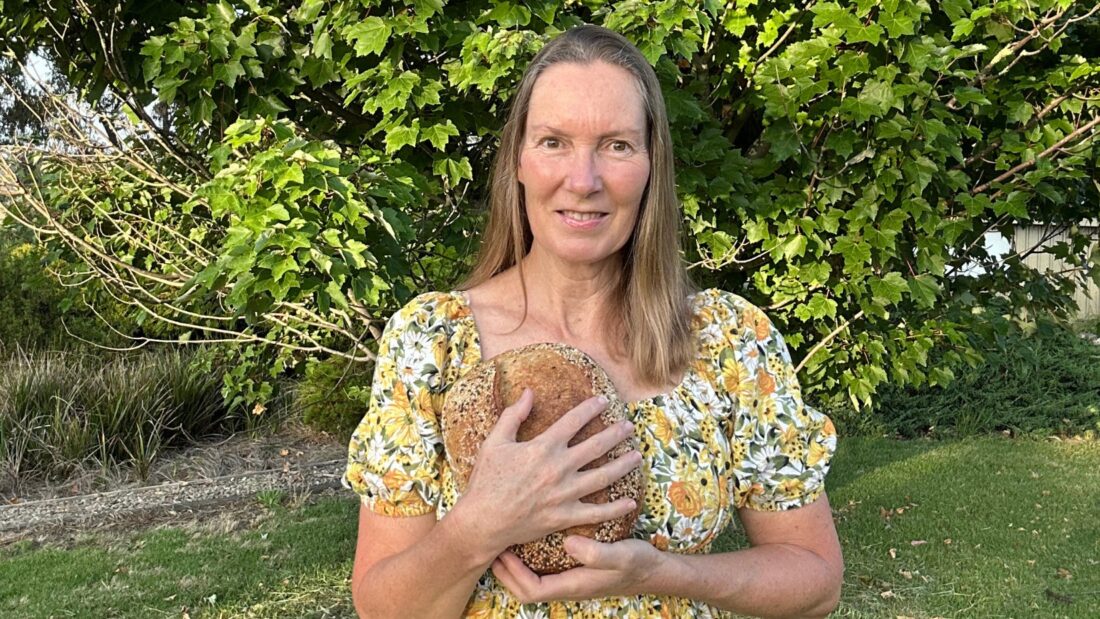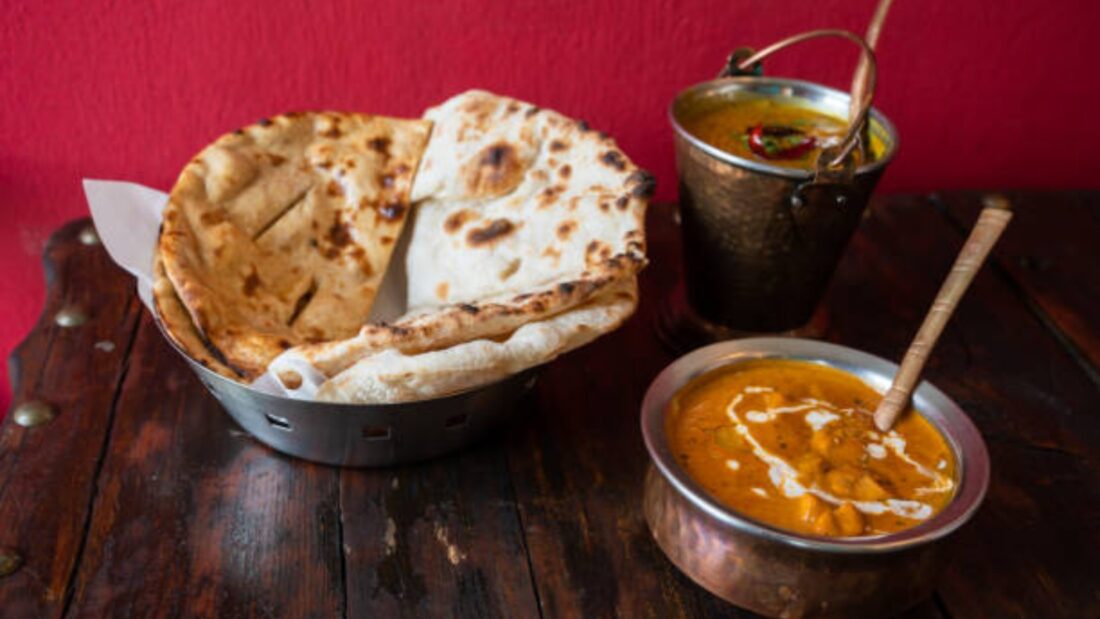I love the smell, taste and texture of my Khorasan sourdough bread, so I wanted to be part of the promotion of Real Bread Week.
And to answer your question “Can I eat bread?”
So many people that I talk with are crazy about low carbs, but not all carbs are equal and not all breads are equal as we will explore in this post.
I am also going to share the current nutrition recommendations for grains and cereals, so you can see why they are great sources of nutrients. 
Real Bread Week is an annual international celebration of supporting your local, independent Real Bread bakery and baking your own!
Real Bread is defined by the organisers of this promotion as
Bread made without chemical raising agents, processing aides and other additives
Real Bread week is backed by Sustain, which is an alliance of organisations and communities working together for a better system of food, farming and fishing, and cultivating the movement of change.
Now back to the definition of Real Bread!
Real bread can include all types of breads, including sourdough and unleavened flat breads
Bread recipes can be as simple as flour, water and salt
But they can also include Bakers Yeast, seeds, nuts, cheese, milk, malt extract, herbs, oils, and dried fruits – as long as these ingredients do not have additives either!
Real bread can be any shape and include every type that is additive free: bagel, baguettes, chapati, roti, naan, and lavash. Ciabatta. Tortille, pitta, pide and the list goes on!
Bread is so much more than a sliced sandwich loaf!
Just a note, it can be hard to find a GF loaf that doesn’t have additives.
Not all loaves of bread are created equal
The Real Bread Campaign promotes the benefits of:
-
- Longer fermentation of the sourdough bacteria
- Wholemeal and less refined grains
- Stone Ground flours
- A single continuous making and baking process, cf, part-baking or freezing of the dough
- Locally milled flour
- Low salt levels (1% or less of final product weight)
- Certified biodynamic or organic ingredients
- Ancient or heritage grains
From a nutritional and health perspective
Traditionally fermented sourdough bread, which is a 48 hour process, reduces the gluten content of the bread and lowers the GI of the bread. This occurs all due to the hard work of the bacteria.
Wholemeal and whole grain breads have a higher fibre content and lower GI, which are great for gut health and blood sugar control.
And I am all for lowering the salt content of food, as mentioned in our earlier episode on the DASH diet
Ancient and heritage grains have gained a lot of coverage in the media, but some of the nutritional claims are misleading.
Many of these grains, including quinoa, amaranth and buckwheat aren’t even ‘true’ grains but actually belong to the seed family and are known as pseudo-cereals.
These pseudo-cereals offer similar benefits to other grains and are eaten in much the same way.
One of the most common misconceptions is that ancient grains have much higher levels of protein than traditional grains, but they’re actually very similar.
Another misconception is that quinoa is the only grain to contain the complete spectrum of amino acids – in fact, all grains contain complete amino acids with quinoa having only slightly higher levels!
When it comes to fibre rye and barley top the list, with sorghum, quinoa and amaranth having ½ the fibre of rye
“Enjoy the whole grains that taste good to you and make you feel well nourished!”
Nutritious Virtues
If you avoiding grains – you could be missing out on a valuable source of:
-
- Magnesium – for an alert and active brain and strong bones and teeth and muscle function
- Vitamin B2 for healthy eyes and blood cells
- Vitamins B2 and B3 for smooth radiant skin
- Zinc for strong nails and shiny hair and your immune system
- Fibre for healthy gut bugs – microbiome
Whole grains also help us sustain our energy – by providing iron, vitamins B2 & B3 and soluble fibres.
As I mentioned above – if you are reducing the carbs, you might be missing out on valuable nutrients!
Your question
Can I eat bread?
The simple answer is yes 🙂
But we don’t eat bread in isolation from everything else, so how much you enjoy depends on how active you are.
It is currently recommended that we have at least 3 servings of whole grain cereals a day to support our healthy gut bacteria.
So these three serves might come from a slice of whole grain bread, ½ cup brown rice and ½ cup wholegrain oats.
Now, like most grains, when it comes to bread, the nutritional quality and nourishment we receive depends on what we put it with.
Recently someone shared with me, “I don’t eat bread because I have too much butter on it!”
But a fresh crusty slice of sourdough is the perfect accompaniment to a bowl of pumpkin soup
Just like a japati, roti or naan is the ideal partner for a dhal curry
And rice is meant for a stir fry!
I think you get the picture 🥯
So if you have been avoiding whole grain bread and other whole grains and cereals, I trust you might reconsider these highly nutritious and tasty foods.
If you feel that you have a good understanding of healthy eating,
But find yourself on and off diets, and you want to sustain a healthier way of eating long term then,
You are most welcome to join me in a free 15-minute call to see if I can help you.


